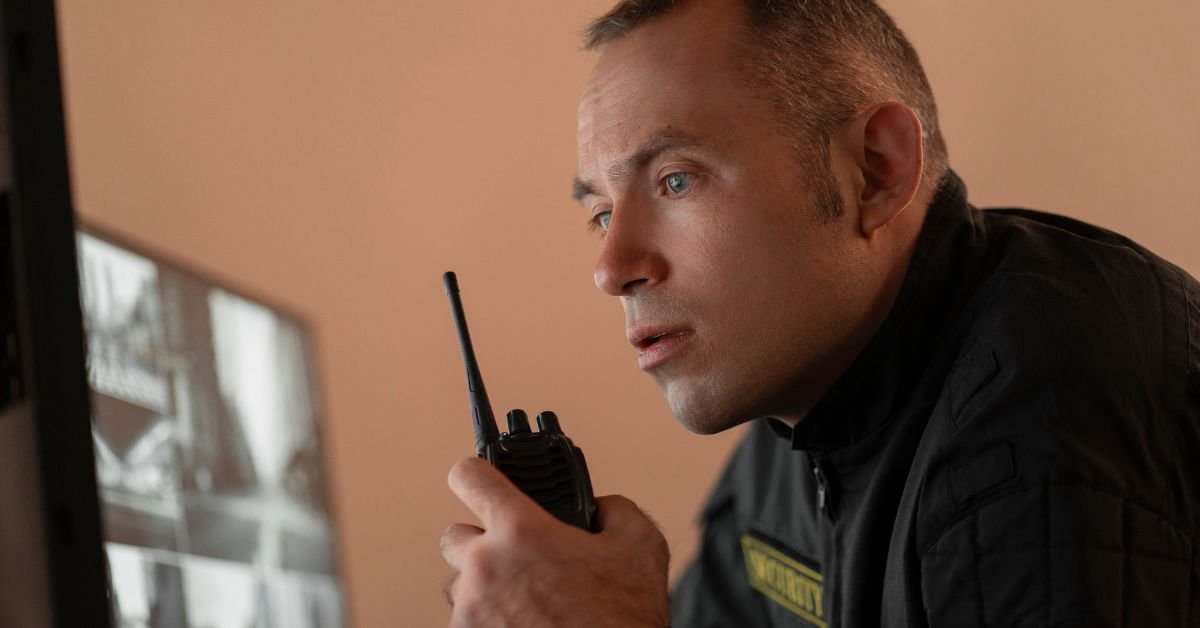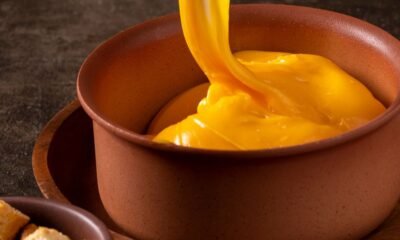EDUCATION
Pulsamento: The Rhythm Beneath Silence

Pulsamento: The Rhythm Beneath Silence
In the vast expanse of both nature and the human experience, there exists a constant yet often unnoticed beat—a pulsing frequency that shapes our existence. This phenomenon, known as Pulsamento, is not merely a metaphor for rhythm but a deeply embedded truth of life itself. It is the subtle vibration that exists in silence, the biological tempo guiding our bodies, the vibrational field linking mind and matter, and the artistic pulse inspiring movement, music, and visual expression. From the cellular to the cosmic, pulsamento reflects a universal resonance.
The Biological Pulse: Our Innate Rhythm
At the core of human physiology lies an intricate system of rhythms. The beating of the heart, the rise and fall of breath, and the patterns of brain waves together form a personal symphony of biological motion. These bodily rhythms are governed by circadian cycles, hormonal pulses, and nervous system oscillations that work in harmony to regulate our well-being. When the body falls out of sync—through stress, poor sleep, or disconnection from natural light cycles—our internal tempo becomes disrupted, affecting everything from mood to immune function.
Heart rate variability, a key indicator of physical resilience, offers insight into how adaptable we are to emotional and environmental stress. Practices such as breathwork, meditation, and somatic movement help regulate this variability by bringing awareness to the pulse that lies beneath our daily routines. The heartbeat, although automatic, responds to our emotions and environment, revealing how pulsamento bridges biology and consciousness.
The Sound of Vibration: Resonance and Frequency
All matter, including the human body, operates at a vibrational frequency. The universe hums with resonance—from the subatomic to the galactic scale. Ancient traditions understood this intuitively: sound healing, chanting, and musical therapy have long been used to restore energetic balance. Science now supports these practices, showing how certain frequencies can alter brainwave states, reduce stress hormones, and support physical healing.
Binaural beats, for example, create specific frequencies that the brain synchronizes with, inducing states of deep relaxation or focused attention. Similarly, the Schumann resonance—the Earth’s natural electromagnetic pulse—has been shown to affect human brain activity, linking us more closely to the planet than we often acknowledge. These vibrational truths underpin the essence of pulsamento: rhythm exists even in silence, carried not by sound but by frequency.
Artistic Expression and the Pulse of Creation
In the creative arts, pulsamento manifests as the invisible rhythm that binds a composition. In music, it is the tempo and meter that guide the flow of a piece; in dance, it becomes kinetic movement synced to internal and external beats. Visual art reflects it through repetition, symmetry, and wave-like patterns that evoke the flow of time or emotion.
Kinetic art, for example, is driven by motion and time, often powered by motors or the wind, echoing the constant shift of rhythm in the natural world. Modern artists experiment with vibration-sensitive installations that respond to the viewer’s proximity or voice, creating a participatory experience rooted in resonance. Performance art rooted in somatic practices explores the embodiment of pulse, using the body’s rhythms as both subject and medium.
Designers and musicians frequently return to natural cadences and bodily patterns to ground their work in authenticity. The human preference for tempo around 60-100 BPM—coincidentally aligned with average heartbeats—is a testament to our intuitive alignment with pulsamento.
Meditation, Movement, and Inner Awareness
The rise of mindfulness practices has brought renewed attention to the importance of internal rhythms. Techniques such as breath awareness, guided meditation, and somatic therapy encourage practitioners to tune into their body’s pulse. These methods highlight how silence is never truly empty but is filled with sensation, vibration, and movement.
Practices like yoga, tai chi, and qigong are structured around rhythmic breathing and intentional movement, aligning practitioners with the flow of life. Dance movement therapy similarly leverages the body’s pulse as a tool for healing trauma, enhancing emotional expression, and fostering connection. These holistic methods reveal the power of listening to one’s inner beat and respecting its wisdom.
The act of “tuning in” to these rhythms fosters a deeper connection to self and surroundings. It encourages the regulation of stress, the increase of emotional intelligence, and the sharpening of intuitive perception. This listening is not passive; it is an active engagement with the rhythm beneath the noise.
Pulsamento in the Natural World
The world outside mirrors the rhythms within. Ocean tides rise and fall in a perpetual flow, dictated by lunar cycles. Plants open and close in response to sunlight and temperature, guided by photoperiodism. Animal migrations, bird songs, and the changing seasons all pulse with an inherent regularity. These cycles speak of a greater rhythm that connects all living things.
Modern ecological studies affirm that biodiversity thrives where natural rhythms are undisturbed. Human activity, from artificial lighting to noise pollution, disrupts these pulses, throwing ecosystems off balance. Understanding pulsamento as a natural force can foster more mindful living and greater ecological empathy.
Through biomimicry, architects and engineers are beginning to incorporate these natural rhythms into design—creating buildings that breathe, lighting systems that follow circadian patterns, and technologies that harmonize with rather than dominate the environment.
A Spiritual Metaphor for Connection
Beyond the physical and artistic, pulsamento is a spiritual metaphor. Many traditions speak of the “music of the spheres,” the cosmic vibration that connects all things.
In spiritual philosophy, pulsamento is the pulse of the soul—a reminder of our origins and our place within the vast web of existence. the stillness that contains movement.
FAQs
What is the concept of Pulsamento? Pulsamento refers to the intrinsic rhythm or pulse that underlies natural, biological, artistic, and spiritual systems. It is the subtle beat that exists beneath silence, guiding movement, emotion, and energy.
How does Pulsamento relate to human health? It is closely tied to heart rate, breath, and circadian rhythms. Practices that align with these pulses—like meditation, yoga, and sound therapy—can improve mental and physical well-being.
Can Pulsamento be observed in nature? Yes. It is evident in the rhythmic cycles of tides, animal behavior, and plant responses. These pulses maintain balance in ecosystems and reflect the planet’s own energetic patterns.
How is Pulsamento used in art and music? It guides the tempo in music, the flow in dance, and the repetition in visual art. Artists often use rhythm as a symbolic or literal tool to express emotion, time, and motion.
Is Pulsamento a scientific or spiritual concept? It bridges both realms. While rooted in measurable rhythms and frequencies, it also serves as a metaphor for spiritual connectivity and inner awareness.
Conclusion
Pulsamento The Rhythm Beneath Silence invites us to recognize that behind every still moment lies a powerful motion Whether through biological patterns, vibrational frequencies, artistic expression, or spiritual metaphor, pulsamento connects all things in a shared cadence. Embracing this rhythm invites harmony, presence, and deeper understanding of the world within and around us.
CLICK HERE FOR MORE BLOG POSTS

EDUCATION
How to Navigate www.welearn 2.0 Dashboard Easily

www.welearn 2.0 has emerged as a leading platform for students, teachers, and educational institutions. If you’re wondering how to navigate, optimize, and fully benefit from WeLearn 2.0, you’re not alone. Many learners and educators struggle to understand its features, troubleshoot login issues, and track progress effectively. This comprehensive guide dives into every aspect of the platform, offering actionable tips and insights for 2025.
How to Log In to www.welearn 2.0
Logging into WeLearn 2.0 is straightforward, but a few key steps ensure smooth access:
- Visit the official www.welearn 2.0 website.
- Enter your credentials (student ID or email and password).
- Complete any two-factor authentication if enabled.
- Access your dashboard to view courses, assignments, and announcements.
“I was confused at first, but after following the step-by-step login guide, accessing my courses became seamless,” shares a college student.
Tip: Always ensure your browser is updated and avoid using public Wi-Fi for login to protect student data.
Best Features of WeLearn 2.0 for Students
WeLearn 2.0 has evolved from its predecessor by introducing several student-focused enhancements:
- Interactive dashboards: Track assignments, grades, and notifications in real time.
- Course modules: Access lessons, quizzes, and multimedia content easily.
- Progress tracking: Visual analytics help monitor learning outcomes.
- Collaboration tools: Forums, group chats, and project boards for peer interaction.
These features make it easier for students to stay organized, engaged, and accountable.
WeLearn 2.0 Course Modules and Access Guide
Each course on WeLearn 2.0 is divided into structured modules:
- Module 1: Introduction & Objectives – overview of the subject matter.
- Module 2: Core Lessons – interactive content, video lectures, and readings.
- Module 3: Assessments – quizzes, assignments, and discussion prompts.
- Module 4: Resources & References – downloadable materials and external links.
Access is simple: just click the module tab from your dashboard, and all materials load seamlessly.
Tips for Teachers Using WeLearn 2.0 Effectively
Educators can maximize WeLearn 2.0 for classroom engagement:
- Schedule assignments with clear deadlines.
- Use analytics to identify struggling students early.
- Integrate multimedia resources to enhance learning.
- Encourage discussion boards for collaborative learning.
A teacher shared: “Using WeLearn 2.0’s analytics helped me identify students who needed extra help before final exams.”
Troubleshooting WeLearn 2.0 Login Issues
Some common login problems include:
- Forgotten password: Use the “Forgot Password” link.
- Browser incompatibility: Switch to Chrome, Edge, or Firefox.
- Two-factor authentication errors: Check your email or mobile verification.
- Server downtime: Check official announcements or contact support.
Following these steps minimizes interruptions in accessing WeLearn 2.0.
Differences Between WeLearn 1.0 and 2.0
WeLearn 2.0 offers significant improvements over its predecessor:
| Feature | WeLearn 1.0 | WeLearn 2.0 |
|---|---|---|
| Dashboard | Basic overview | Interactive & visual |
| Course Access | Limited | Full multimedia support |
| Collaboration Tools | Minimal | Chat, forums, project boards |
| Progress Analytics | None | Real-time tracking |
| Mobile Access | Basic | Fully optimized |
The upgrade emphasizes user experience, security, and analytics for both students and teachers.
How to Track Progress on WeLearn 2.0
Progress tracking is one of WeLearn 2.0’s most powerful features:
- Check course completion percentages.
- View quiz and assignment scores immediately.
- Monitor participation in discussion boards.
- Export progress reports for personal review or parent-teacher meetings.
Top Schools Using WeLearn 2.0 Platform
Many institutions worldwide have adopted WeLearn 2.0 for digital learning:
- High schools offering hybrid education.
- Universities integrating online modules.
- Vocational training centers providing remote certification.
- Online academies and e-learning providers expanding access.
These schools leverage the platform to enhance teaching efficiency and student outcomes.
How Secure Is www.welearn 2.0 for Student Data?
Security is critical for any e-learning platform. WeLearn 2.0 ensures:
- Encrypted login credentials.
- Two-factor authentication for added protection.
- Regular server audits and compliance with data privacy laws.
- Limited access to sensitive student data by teachers and administrators.
Users are encouraged to maintain strong passwords and monitor account activity regularly.
Step-by-Step Guide to Navigate WeLearn 2.0 Dashboard
The WeLearn 2.0 dashboard is designed for intuitive navigation:
- Home: View announcements, updates, and shortcuts.
- Courses: Access all enrolled modules.
- Assignments: Track upcoming deadlines and submission status.
- Analytics: Visualize grades, progress, and participation.
- Settings: Manage profile, notifications, and security options.
Exploring these tabs regularly helps students stay organized and engaged.
FAQ’s
Use the “Forgot Password” link on the login page and follow email verification instructions.
Yes, analytics tools provide detailed progress reports and forum engagement metrics.
Absolutely. The platform works seamlessly on tablets and smartphones with responsive design.
Contact support via the Help Center or official support email for prompt assistance.
Final Thoughts
www.welearn 2.0 is more than a learning management system; it’s a comprehensive digital education platform that empowers students, teachers, and institutions alike. By understanding its login procedures, features, course modules, and security measures, users can fully leverage its capabilities for 2025 and beyond.
BUSINESS
Sketching with Simplicity: The Power of Pencil on Pencil

Sketching with Simplicity with Graphite pencils are arguably the most widely used type of pencil for drawing. Available in a wide range of hardness grades, ranging from H (hard) to B (black), these pencils offer exceptional versatility. Harder pencils like H and 2H are ideal for precise lines and light sketches, whereas softer pencils such as B, 2B, and 6B are perfect for deeper shading and bold lines.
The beauty of graphite lies in its smoothness and blendability. When sketching with graphite, artists can create everything from fine details to broad strokes. Graphite also lends itself well to creating tonal depth in sketches—an essential skill in all forms of art. Whether drawing landscapes or portraits, graphite pencils provide an excellent foundation for artists to bring their ideas to life.
Colored Pencils: Adding Vibrance and Texture
While graphite pencils are the foundation for most sketches, colored pencils open up a world of vibrant expression. Colored pencils, such as Prismacolor or Faber-Castell, allow artists to add layers of rich color to their sketches. The key to mastering colored pencil drawing is building up layers gradually and using techniques like burnishing to create a smooth, seamless finish.
For artists who enjoy detailed and realistic work, colored pencils offer a range of possibilities. They can be used for everything from lifelike portraits to still life sketches. Whether you’re using a set of soft or hard colored pencils, this medium helps artists infuse life and emotion into their drawings.
Mechanical Pencils: Precision and Fine Detail
For those who need precision, mechanical pencils are an essential tool in their drawing arsenal. The fine leads of mechanical pencils allow for highly detailed and accurate drawings, particularly when working on small-scale sketches or intricate designs. The consistent line thickness is perfect for those who rely on uniformity and crisp, sharp lines.
Mechanical pencils come in a variety of lead sizes, from 0.3mm to 0.9mm, making them perfect for various types of drawing, from intricate patterns to fine architectural sketches. They also tend to produce cleaner, more precise lines compared to traditional wooden pencils.
Mastering Shading with Pencil: Techniques to Elevate Your Art
The Power of Layering and Blending
One of the fundamental skills an artist must learn when sketching with pencils is how to properly layer and blend pencil marks. The beauty of pencil drawings often lies in the gradual build-up of tones and textures. To achieve the desired depth, artists begin with light pencil strokes and progressively darken areas to create shadows.
To blend, artists can use a blending stump or even their fingers to smooth out the graphite. This technique can be used to transition between light and dark areas seamlessly, giving the sketch a three-dimensional appearance. The ability to blend graphite or colored pencils effectively is a hallmark of skilled artists, enabling them to create highly realistic and detailed artwork.
Cross-Hatching and Stippling: Advanced Shading Techniques
While blending is the most commonly used method for shading with pencils, there are also other techniques that can add unique texture to your work. Cross-hatching and stippling are two effective methods for adding depth and detail.
Cross-hatching involves drawing intersecting lines in different directions to build up shading gradually. This technique is particularly useful for creating tonal contrast and depth. On the other hand, stippling involves the use of small, controlled dots to create shading. When used properly, stippling can give a sketch a very distinct texture and appearance.
Using Erasers for Highlights
An often overlooked aspect of pencil drawing is the use of erasers—not just for fixing mistakes, but for creating highlights. By gently erasing small sections of the drawing, artists can create lighter areas, which provide contrast to the darker tones of the drawing. This technique helps to create the illusion of light and depth in the artwork, making the drawing more lifelike.
The Role of Paper in Pencil Art
While pencils are a crucial part of any drawing process, the type of paper you choose can make a significant difference in the final result. For sketching, rough paper with a lot of texture can be ideal for capturing more detail. However, for smoother, more polished work, a higher-quality, smoother paper will yield better results. Paper weight also plays an essential role: heavier paper can handle more layers of graphite without buckling.
Artists often choose different papers based on their desired effect. For example, cold-pressed paper is popular for its texture, which gives a more expressive feel to pencil drawings. Hot-pressed paper provides a smoother finish, allowing for delicate blending and fine details. Choosing the right paper can elevate the pencil work to new levels, allowing artists to experiment with texture and tone.
Popular Brands: What to Look for in Pencils
When it comes to selecting the best pencils, certain brands have built a reputation for producing high-quality materials that artists trust. Faber-Castell, Prismacolor, and Derwent are some of the top brands known for their precision, consistency, and durability. These companies offer a range of products suitable for various artistic needs—whether you’re sketching a quick idea or creating a detailed, layered drawing.
For graphite, Faber-Castell’s 9000 series offers a wide range of grades for every possible need, from fine details to dark, dramatic shading. Prismacolor colored pencils are often preferred for their smoothness and ability to blend effortlessly, making them a favorite among professional illustrators and artists.
Frequently Asked Questions (FAQs)
What is the best pencil for sketching?
The best pencil for sketching depends on your style. For detailed, light lines, a 2H or 4H pencil works well. For shading and darker lines, a 2B or 6B pencil is ideal. Many artists prefer using a combination of pencils for different effects in their sketches.
How do you properly sharpen a pencil for sketching?
To sharpen a pencil for sketching, use a sharpener that creates a fine point. Avoid electric sharpeners, as they can break the lead. A manual sharpener or a craft knife is ideal for maintaining a fine, controlled point for detailed work.
Can you use colored pencils for professional artwork?
Yes, colored pencils can be used for professional artwork. In fact, many artists, including those who specialize in realistic portraiture and detailed illustrations, use high-quality colored pencils for their works. Brands like Prismacolor and Faber-Castell offer artist-grade colored pencils that provide vibrant color and blendability.
What are the benefits of using a mechanical pencil over a wooden pencil?
Mechanical pencils provide consistent line thickness, which is beneficial for intricate designs or precise sketches. They don’t require sharpening, making them more convenient for artists who need to maintain a uniform line. Additionally, they are great for those who prefer fine, sharp lines.
How do I make my pencil drawings look realistic?
To make pencil drawings look realistic, focus on shading, blending, and layering. Gradually build up your tones, and make sure to pay attention to details like highlights and shadows. Use softer pencils for deeper shadows and finer pencils for lighter, detailed areas.
Conclusion
The pencil is an incredibly versatile and accessible tool that provides infinite possibilities for sketching and drawing. Whether you’re using a traditional wooden pencil, a mechanical pencil for precision, or colored pencils to add vibrant life to your work, the simplicity of this tool should never be underestimated. Mastering the techniques of pencil sketching—such as layering, shading, and blending—will elevate your artwork and bring out the true potential of your drawings. So, embrace the power of pencil on pencil, and let your creativity flow with every stroke.
EDUCATION
Code 1013: Officer Needs Immediate Assistance

Code 1013 it signifies an urgent scenario: an officer needs immediate assistance. This concise code conveys life-and-death seriousness—mobilizing backup units, activating emergency response protocols, and alerting communications centers. From street-level operations in urban precincts to rural sheriff departments, understanding the weight behind 1013 calls helps officers, dispatchers, and the public appreciate the coordinated effort involved in ensuring officer safety.
The Origin and Meaning of Code 1013
Police radio codes like “10‑13” or “1013” emerged as part of standardized ten-code systems, designed to speed up and clarify communications. While jurisdictions vary—some use 10-13, others rely on plain-language terms like “officer needs emergency assistance”—the core intent remains consistent: a request for backup in a critical situation with no room for delay.
Evolving Through Communications Protocols
Law enforcement agencies continually refine protocols so that personnel instantly recognize the severity behind certain codes. Code 1013 doesn’t just signal backup—it often triggers alerts to relays, tactical support, and even nearby first responders via Computer-Aided Dispatch (CAD) systems and Automatic Vehicle Location (AVL) technologies.
Key Responders and NLP Entities Involved
When a 1013 call is made, multiple entities spring into action:
-
Dispatch Center: The nerve center that evaluates the call, broadcasts the message across radio frequencies, and alerts all relevant units.
-
Nearby Patrol Units: Officers in adjacent beats respond immediately, often within seconds, to the emergency broadcast.
-
SWAT or Tactical Teams: If a high-risk scenario is detected—such as an officer down or armed suspect—they are notified for reinforcements.
-
EMTs and Firefighters: In cases involving injuries, medical teams coordinate closely with police to ensure rapid extraction and treatment.
-
Supervisory Personnel: Sergeants or lieutenants oversee the operation, maintaining situational awareness and strategic command.
Supporting Systems: CAD, AVL, and Body-Worn Cameras
Computer-Aided Dispatch (CAD) and Automatic Vehicle Location (AVL) are essential technological layers in the Code 1013 response.
Dispatchers pinpoint the officer’s coordinates using GPS-equipped cruisers and mobile data terminals, enabling swift unit dispatch within the vicinity.
Simultaneously, body-worn cameras automatically activate, capturing crucial audio and video at the scene—providing transparency for accountability, judicial evidence, or internal reviews.
Legal and Procedural Dimensions
Those responding to a Code 1013 call must operate under established departmental policies, criminal justice standards, and civil rights considerations:
-
Use of Force: Officers must act within the bounds of departmental regulations and legal statutes when using force.
-
Mutual Aid Agreements: Interagency cooperation ensures neighboring departments can respond promptly—even across municipal lines.
-
Evidence Collection: Rapid arrival at the scene preserves physical evidence, allows forensic requests, and helps interview witnesses.
-
After-Action Reporting: Each Code 1013 incident triggers incident logs through RMS (Records Management Systems), building data for operational reviews, training, and risk management.
On-the-Ground Reality: Inside a Code 1013 Call
Imagine a routine check in a dimly-lit alley. The responding officer radios in: “Dispatch, 10-13 at location—backup needed, suspect is armed and resisting suspicion.” The tone shifts instantly. Responding units navigate traffic, coordinate air support if available, and attempt radio contact with the officer.
Within moments, lights and sirens surround the site. Tactical units assemble, while EMS teams stage nearby. If the officer is injured, medics provide lifesaving aid. The suspect is detained or subdued. Computers log call times, responders, and notes for reporting.
This rapid orchestration highlights how technological systems, training, and interagency collaboration converge to ensure officer safety and community protection.
Training Requirements and Scenario Drills
To prepare for 1013 scenarios, many departments incorporate:
-
Field Exercises: Simulations in varied locations—from urban alleys to rural byways—train officers in coordinated response, containment, and cover tactics.
-
Communications Drills: Dispatchers and officers rehearse clear and concise transmissions to prevent radio congestion during real-time emergencies.
-
Officer Safety Protocols: Tactical reloading, suspect containment, suspect transportation, and initial medical care are practiced frequently to reduce reaction time under stress.
-
Technology Integration: AVL and MDT functionalities are tested regularly to ensure accuracy in squad deployment.
Community Impact and Public Awareness
While 10‑13 alerts primarily serve law enforcement, they sometimes provoke public anxiety—sirens, lights, and cordon setups can disrupt neighborhoods. That’s why many agencies proactively educate communities with public awareness efforts:
-
Transparency Campaigns: Explaining the meaning behind police codes demystifies their use and fosters trust.
-
Community Policing Forums: Discussions on public safety, crisis intervention, and gang-related incidents help locals understand these operational signals.
-
Media Relations: Accurate press reports of Code 1013 incidents prevent misinformation and rumors from spreading.
Variations Across Jurisdictions
Not all regions use the exact “10-13” formulation. Some alternatives include:
-
Officer needs assistance – Traditional ten-code terminology.
-
10-33 – A broader emergency alert in some areas.
-
“All units stand by” – Used in specific sensitive or parole search operations.
-
Plain English Alert – Especially common in agencies advocating for clarity, such as “Officer requires emergency assistance.”
Nevertheless, regardless of the label, the end goal is consistent: protecting law enforcement personnel in the line of duty.
Technology’s Future Role in Code 1013 Alerts
As law enforcement evolves, so do the systems that support it:
Advanced GPS and Predictive Analytics
Geofencing allows dispatchers to pre-stage units in areas with high call volume, improving response times for 1013 situations.
Mobile Push Notifications
Off-duty officers registered in regional responder programs may receive Code 1013 alerts via smartphone apps—enhancing mutual aid during manpower shortages.
Artificial Intelligence
Some jurisdictions explore AI to flag distress calls faster and route them automatically to the nearest qualified responders, reducing human delay.
Summary Table: Code 1013 Ecosystem
| Element | Description |
|---|---|
| Police Radio Code | A cryptic alert signaling urgent officer assistance is needed. |
| Dispatch Functions | Broadcasts message, locates officer via CAD/AVL, assigns response units. |
| Responding Personnel | Nearby patrol, SWAT, EMS, supervisors—all coordinate under common protocol. |
| Tech & Tools | Body cams, AVL, MDTs, mobile alerts—support situational awareness. |
| Legal Framework | Use-of-force, mutual aid, civil rights, evidence, incident reporting. |
| Community Role | Understanding procedures reduces panic and builds trust. |
| Emerging Innovations | AI, GPS optimization, mobile alerts refining future responses. |
FAQs: Code 1013 Officer Needs Immediate Assistance
Q: What exactly does “Code 1013” mean?
A: It’s a ten-code phrase used by many law enforcement agencies to indicate an officer is in immediate danger or needs urgent back‑up.
Q: How does Code 1013 differ from Code 10‑33?
A: While both are emergency alarms, 10‑33 often signals a general emergency or “all units stand by,” whereas 10‑13 specifically indicates an officer needs immediate assistance in the field.
Q: Who responds to a Code 1013 call?
A: Response can include patrol officers, SWAT teams, supervisors, and EMS, depending on the threat level communicated in the dispatch.
Q: Do all police departments use “10‑13”?
A: No. Some use alternative phrasing like “officer needs emergency assistance,” plain English alerts, or different codes—though the function remains the same.
Q: Is the public informed when a Code 1013 is broadcast?
A: This varies. Public radio feeds used by scanners may broadcast the code concurrently; some agencies opt for silent dispatch to avoid escalating situations.
Q: How are Code 1013 calls logged?
A: Dispatch entries include timestamp, responding units, incident description, and resolution details—stored in RMS for reporting and accountability.
Conclusion
When the words Code 1013 reverberate across police frequencies, they carry intense urgency. It’s more than just radio chatter—it’s a carefully choreographed, technology-driven, legally anchored, community-conscious operation ensuring an officer’s safety in life-threatening moments. Understanding the depth of coordination behind these words—dispatch, dispatch technology, responder units, protocols, community interaction, and ongoing innovation—gives insight into a system built for swift, effective protection.
-

 BUSINESS2 months ago
BUSINESS2 months agomPaaS: Powerful Precision for Modern Measurement
-

 BLOG4 months ago
BLOG4 months agoToyota Sequoia Towing Power: What Can It Really Haul?
-

 BLOG4 months ago
BLOG4 months agoGolden Cream of Spain: A Heritage Rich in Taste and Tradition
-

 BLOG4 months ago
BLOG4 months agoFinding Home in China: A Journey Through Culture and Comfort
-

 BLOG4 months ago
BLOG4 months agoYE Tracker: Your Ultimate YouTube Earnings Companion
-

 EDUCATION3 months ago
EDUCATION3 months agoStolen Mail, Lost Checks, Hijacked Credit
-

 FASHION4 months ago
FASHION4 months agoParfum vs Cologne: What’s the Real Difference?
-

 BLOG3 months ago
BLOG3 months agoDJ On Board: Spinning Beats at Every Turn



